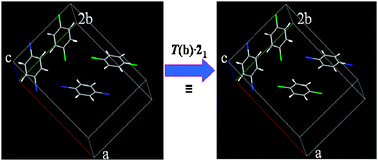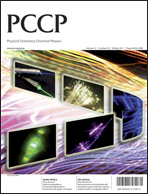Substitutional and orientational disorder in organic crystals: a symmetry-adapted ensemble model†
Abstract
Modelling of disorder in organic crystals is highly desirable since it would allow thermodynamic stabilities and other disorder-sensitive properties to be estimated for such systems. Two disordered organic molecular systems are modeled using a symmetry-adapted ensemble approach, in which the disordered system is treated as an ensemble of the configurations of a supercell with respect to substitution of one disorder component for another. Computation time is kept manageable by performing calculations only on the symmetrically inequivalent configurations. Calculations are presented on a substitutionally disordered system, the dichloro/


 Please wait while we load your content...
Please wait while we load your content...